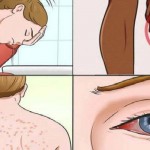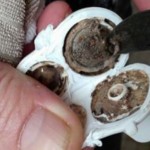MOLD ILLNESS IS EVERYWHERE: WHAT IT IS AND 11 SIGNS YOU HAVE IT
Mold is a problem present in almost all homes, but numerous people are not even aware of the problem. People usually look at the shower curtain, under the skin, or in the basement when they think of mold, but you should know that mold can appear everywhere.
Mold can grow in drywall, in the roof if it leaks, even in the Christmas tree. According to a study, even Christmas trees can breed mold, silently releasing millions of spores into the room and contributing to winter allergies and asthma attacks. The same study discovered that indoor air quality was reduced six-fold over the two weeks a Christmas tree usually decorates a room.
Type of Mold
There are about 1,000 kinds of mold that can be growing in the modern American home. The experts have classified these molds on the basis of the impact they have on people and other living creatures.
Allergenic Molds
Allergenic molds are one of the least dangerous types of mold. They only represent a problem for people who suffer from asthma and people who have a predisposed allergy to the specific mold. Moreover, children are more prone to mold allergies than adults.
Pathogenic Molds
This type of mold causes infections. The pathogenic molds are especially harmful for people who have suppressed immune system. People who are exposed to these types of mold frequently have acute response that resembles bacterial pneumonia.
Toxigenic Molds
As you already guess, these molds create mycotoxins that can cause severe health effects. These molds have been associated with suppression of the immune system and cancer. These types of molds contain toxic chemicals that can be absorbed into the body when one inhales them, eats them, or touches them.
According to Dr. Mercola, the Five Most Common Indoor Molds are:
– Aspergillus: this mold is usually present in warm and extremely damp climates. It usually occupies the house dust and produces mycotoxins. It can lead to lund
– Alternaria: this mold is frequently found in the nose, mouth, and the upper respiratory tract of people. It is able to cause allergies.
– Penicillium: this type of mold is pretty common and it is often found on wallpapers, carpets, fiberglass duct insulation, and decaying fabrics. It causes allergies and asthma, and some of its species produce mycotoxins. One of these molds is the well known antibiotic penicillin.
– Stachybotrys: this ‘black mold’ is highly toxic and produces great amounts of mycotoxins that can lead to serious breathing difficulties and bleeding of the lungs, among other health problems. Fortunately, this type of mold is not that common in the homes, but it is not rare either. It is sometimes found on wood or paper (products made of cellulose), but it is never found on tile, concrete, or linoleum.
– Cladosporium: this type of mold is very common outdoor fungus which can find its way indoors and start growing on textiles, wood, and other damp, porous materials. This type of mold can stimulate hay fever and asthma symptoms.
What is Mold Illness?
Mold illness is a health issue that can occur as a result of any kind of mold exposure. Mold allergy is the most common issue cause by mold exposure, but still, mold can contribute to illness without an allergic reaction. Sometime, infections or irritant and toxic reactions appear as a result. Infections caused by mold can contribute to a number of problems varying from flu-like symptoms to skin infections and pneumonia.
Another problem is mold toxicity, which is considered as a Chronic Inflammatory Response Syndrome (CIRS). The definition of the CIRS was given by Ritchie Shoemaker, MD, and author of ‘Surviving Mold: Life in the Era of Dangerous Buildings’, and it goes like this:
“An acute and chronic, systemic inflammatory response acquired following exposure to the interior environment of a water-damaged building with resident toxigenic organisms, including, but not limited to fungi, bacteria, actinomycetes, and Mycobacterium as well as inglammogens…” (Wise Mind Healthy Body)
11 Signs of Mold Illness
– Tremors and vertigo
– Metallic taste in the mouth
– Brain fog, memory issues, headaches, troubles concentrating
– Digestive issues such as change in appetite, nausea, diarrhea, abdominal pain
– Fatigue and weakness
– Asthma and sinus problems including cough or soreness of breath
– Unexplained muscle cramping, pains and aches in the joints, constant nerve pain
– Eye problems including red eyes or sensitivity to light
– Excessive thirst and increased urination
– Numbness and tingling
– Temperature regulation or nigh sweats
Has mold affected your life in any way?
If you want to find out how to fight back, take a look at this video.
Don’t Forget To Share With Your Friends And Family On Facebook, As You Might Help Someone In Need!
Source: www.davidwolfe.com
Leave a Reply
You must be logged in to post a comment.


